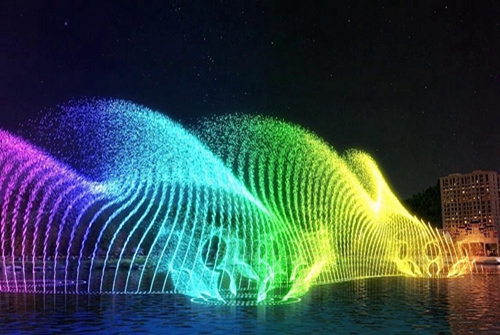On the Construction and Design of Watercraft Landscape
Generally speaking, aquatic landscape can be divided into two categories:

Using terrain or civil structure, imitating natural water landscape, such as streams, waterfalls, artificial lakes, fish ponds, springs, falls and so on, these are widely used in traditional gardens in China.
It relies entirely on fountain equipment for landscaping. Various fountains such as music fountain, program control fountain, dry land fountain, atomization fountain, etc. This kind of waterscape is widely used in the field of architecture in recent years, but its development speed is very fast.
Various waterscape projects generally consist of the following aspects: civil pool, pipeline valve system, power pump system, lighting system, etc. Large water bodies or places requiring a higher sense of water quality must also have water quality treatment systems. A good waterscape design must be the product of the perfect combination of the above professional systems on the basis of excellent artistic effect design. Its design points are as follows:
Modeling Design and Nozzle Selection
In waterscape design, we should first analyze the basic requirements of environmental atmosphere, then analyze various forms of waterscape, sort out different combination schemes, draw effect maps, and select the best one.
Waterscape morphology can be divided into static water, running water, falling water, sprinkler and other forms, which can also derive colorful forms of change. Especially because of the development of sprinkler technology, sprinkler posture is changing in thousands of ways. With these materials, and through the artistic design of professionals, we can draw a beautiful water landscape.
Design of Civil Pool
The common depth of landscape pool is 0.6-0.8m. The reason for this is to ensure the submergence depth of the suction outlet, and the bottom of the pool is a whole plane, which is also convenient for the installation, construction and maintenance of pipeline equipment in the pool. Only when the shallow butterfly pool is designed to reflect the hydrophilic characteristics, the suction pit or pump pit is used. The water depth of 0.6-0.8m is actually unsafe. Similarly, in the design of children’s play pool, the depth of 0.3-0.6 m is generally used. Once children fall into the landscape pool, it will be very dangerous.
It is generally considered that 0.2-0.4 m is the appropriate depth. Another advantage of this method is that when the turbidity of the water is slightly higher, the feeling is still clear. The top surface of the pond wall should be available for visitors to sit down and rest. The height of the top surface of the pond wall from the ground is generally 0.30-0.45 M. Except for artificial lakes, the water surface should be higher than the ground. If the water level is low, it will feel like a deep pool. From the hydrophilic point of view, it is more reasonable that the water surface is 0.2m away from the top of the pond wall. Submersible pump pit or pump suction nozzle only need local deepening to meet the water absorption conditions. Grate can be set on the surface of pump pit, which can shield the equipment and act as a grille to prevent large particles from inhaling. From the aesthetic point of view, the surface of the pool should minimize the exposed pipeline equipment, especially the vertical overflow nozzle, which will produce a great sound of drainage and inspiration when the water surface rises.
Pipeline Material Selection
Hot-dip galvanized steel pipes are generally used in earlier projects, but there are many shortcomings. After a period of service, the surface of steel tube is corroded, which affects the appearance, and the service life of steel tube is more than twice as short as that of concrete structure. Copper pipe and stainless steel pipe are better, but the cost is higher. UPVC pipes can avoid corrosion, but there are some problems, such as poor weather resistance and accelerated discoloration aging by direct light irradiation. If it is buried underneath the bottom of the pool (pay attention to the gradient in the north and set up a vent valve at the low end, drainage and freeze-proof in winter), and copper or stainless steel pipe is used in the exposed part, it should be a more reasonable and economical solution. Generally, the service life of UPVC tube can reach 50 years without direct sunlight.
- Installation, debugging and technology of ...
- Why are music fountains being built more a...
- The music-programmed fountain is a movable...
- What are the characteristics of a powerful...
- Seven tips to keep the beauty of the music...
- The Fountain Company Introduces You to the...
- How to match the color of indoor rockery f...
- Music fountain equipment principle













